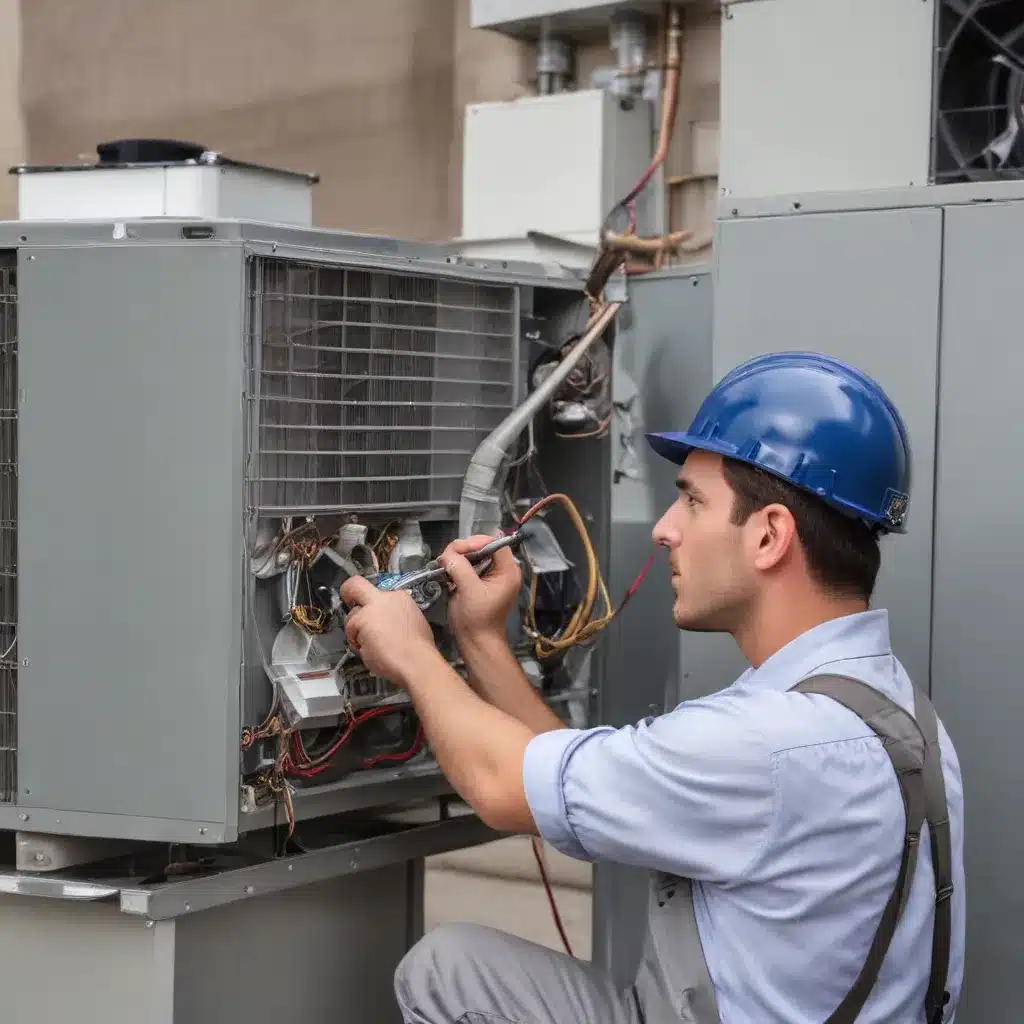
As an HVAC and refrigerant specialist writing for Airgas Refrigerants, I’m here to share my insights on navigating the complexities of HVAC compliance. The heating, ventilation, and air conditioning (HVAC) industry is a crucial part of modern life, ensuring our homes and workplaces remain comfortable year-round. However, this industry is subject to a web of regulations, codes, and guidelines that can seem daunting to the uninitiated.
In this comprehensive guide, we’ll delve into the fundamental aspects of HVAC compliance, exploring the latest industry standards, governmental oversight, and emerging technologies that are reshaping the field. Whether you’re a facility manager, HVAC contractor, or an environmental compliance officer, this article aims to equip you with the knowledge and insights needed to navigate the ever-evolving landscape of HVAC compliance.
HVAC Compliance Regulations
At the heart of HVAC compliance are the industry standards and codes that govern the design, installation, and maintenance of these systems. From the American Society of Heating, Refrigerating and Air-Conditioning Engineers (ASHRAE) to the International Code Council (ICC), a multitude of organizations have established guidelines to ensure the safety, efficiency, and environmental impact of HVAC systems.
Governmental agencies, such as the Environmental Protection Agency (EPA) and the Department of Energy (DOE), also play a crucial role in overseeing HVAC compliance. These regulatory bodies enforce regulations surrounding refrigerant management, energy efficiency, and emissions control, ensuring that HVAC systems meet or exceed the established standards.
One of the key areas of focus in HVAC compliance is energy efficiency. The DOE’s Energy Star program, for instance, sets performance criteria for HVAC equipment, encouraging manufacturers to develop more efficient systems that reduce energy consumption and lower utility costs for building owners.
HVAC System Design Considerations
Designing an HVAC system that aligns with compliance requirements involves a multifaceted approach. Proper ventilation and indoor air quality are essential, as HVAC systems must maintain a healthy and comfortable indoor environment while adhering to ventilation standards set by ASHRAE and other governing bodies.
Accurate heating and cooling load calculations are crucial in determining the appropriate size and capacity of HVAC equipment. Oversizing or undersizing the system can lead to inefficient operation, poor temperature and humidity control, and even safety concerns.
The selection and sizing of HVAC equipment is another critical aspect of compliance. Manufacturers must ensure their products meet or exceed the minimum efficiency standards established by the DOE and the EPA’s ENERGY STAR program. This includes considerations such as refrigerant type, compressor technology, and system controls.
HVAC Installation and Maintenance
Proper installation and maintenance of HVAC systems are essential for ensuring compliance. Obtaining the necessary permits and undergoing rigorous inspections by local authorities are crucial steps in the installation process. Ensuring that the system is commissioned correctly and any issues are promptly troubleshot can help avoid non-compliance.
Ongoing preventative maintenance is the key to maintaining HVAC compliance. Regular filter changes, system cleanings, and component checks can help identify and address potential problems before they escalate. Maintaining detailed records of maintenance activities and system performance can also demonstrate compliance during audits or inspections.
Environmental Impact of HVAC Systems
The environmental impact of HVAC systems is a significant compliance concern, with a focus on refrigerant management, emissions control, and sustainability.
The phase-out of ozone-depleting refrigerants, such as chlorofluorocarbons (CFCs) and hydrochlorofluorocarbons (HCFCs), has led to the adoption of more environmentally friendly low-GWP (Global Warming Potential) refrigerants. Proper refrigerant management, including reclamation, recovery, and recycling, is essential to mitigate the environmental impact of HVAC systems.
Reducing the carbon footprint of HVAC systems is also a growing priority. Compliance with emissions regulations, as well as the integration of renewable energy sources and energy-efficient technologies, can help HVAC systems contribute to a more sustainable built environment.
Occupant Safety and Comfort
HVAC compliance also encompasses the safety and comfort of building occupants. Ensuring proper temperature and humidity control not only enhances occupant comfort but also supports productivity and well-being.
Air filtration and purification systems play a crucial role in maintaining indoor air quality, removing pollutants, allergens, and pathogens from the circulating air. Compliance with ventilation standards set by ASHRAE and local authorities helps safeguard the health and safety of building occupants.
Addressing noise and vibration issues in HVAC systems is another aspect of compliance, as excessive noise and vibration can negatively impact occupant comfort and productivity.
Compliance Documentation and Reporting
Maintaining comprehensive documentation and reporting is essential for demonstrating HVAC compliance. Meticulous record-keeping of system installations, maintenance activities, and equipment performance data can help organizations meet the regulatory reporting requirements set by governing bodies.
Regular auditing and inspections by qualified professionals can identify any areas of non-compliance and provide guidance on corrective actions. Maintaining a robust documentation system can also facilitate a smoother process during these audits, ensuring that organizations remain in good standing with regulatory authorities.
Emerging HVAC Technologies and Trends
The HVAC industry is continuously evolving, with new technologies and trends emerging that are shaping the future of compliance. Smart HVAC systems integrated with the Internet of Things (IoT) can provide enhanced monitoring, remote control, and predictive maintenance capabilities, helping organizations optimize energy efficiency and streamline compliance efforts.
The integration of renewable energy sources, such as solar power and geothermal systems, into HVAC design is gaining traction as a means to reduce the carbon footprint and align with sustainability initiatives. Predictive maintenance strategies leveraging advanced analytics and artificial intelligence can also help HVAC professionals maintain compliance by anticipating and addressing potential issues before they escalate.
In conclusion, HVAC compliance is a multifaceted and ever-evolving landscape that requires a comprehensive understanding of industry standards, governmental regulations, and emerging technologies. By staying informed, implementing best practices, and embracing innovative solutions, HVAC professionals and facility managers can ensure that their systems not only operate efficiently but also meet or exceed the stringent compliance requirements in place. At Airgas Refrigerants, we are committed to providing the necessary resources and expertise to support our clients in navigating the complexities of HVAC compliance, ultimately contributing to a more sustainable and comfortable built environment.

